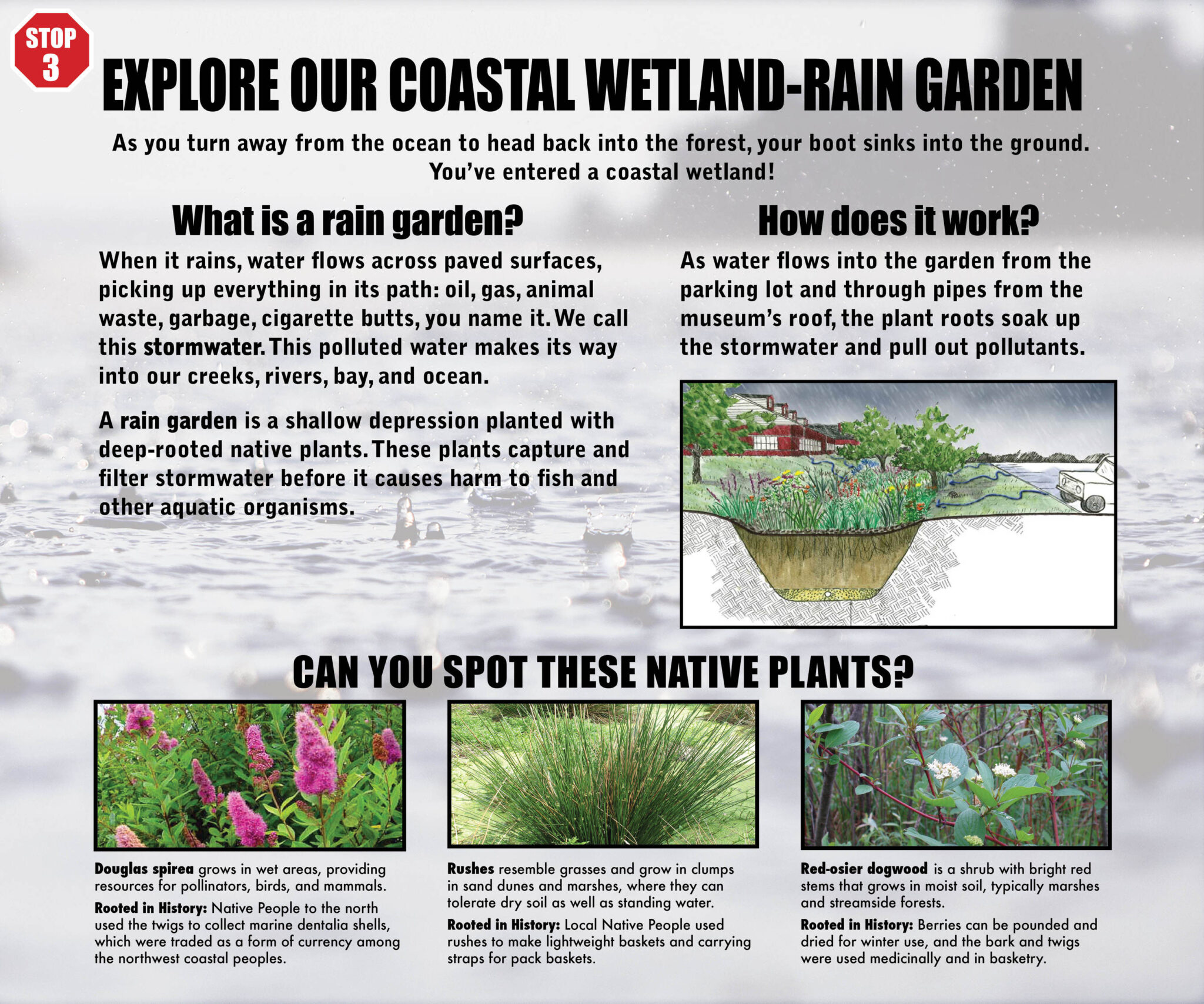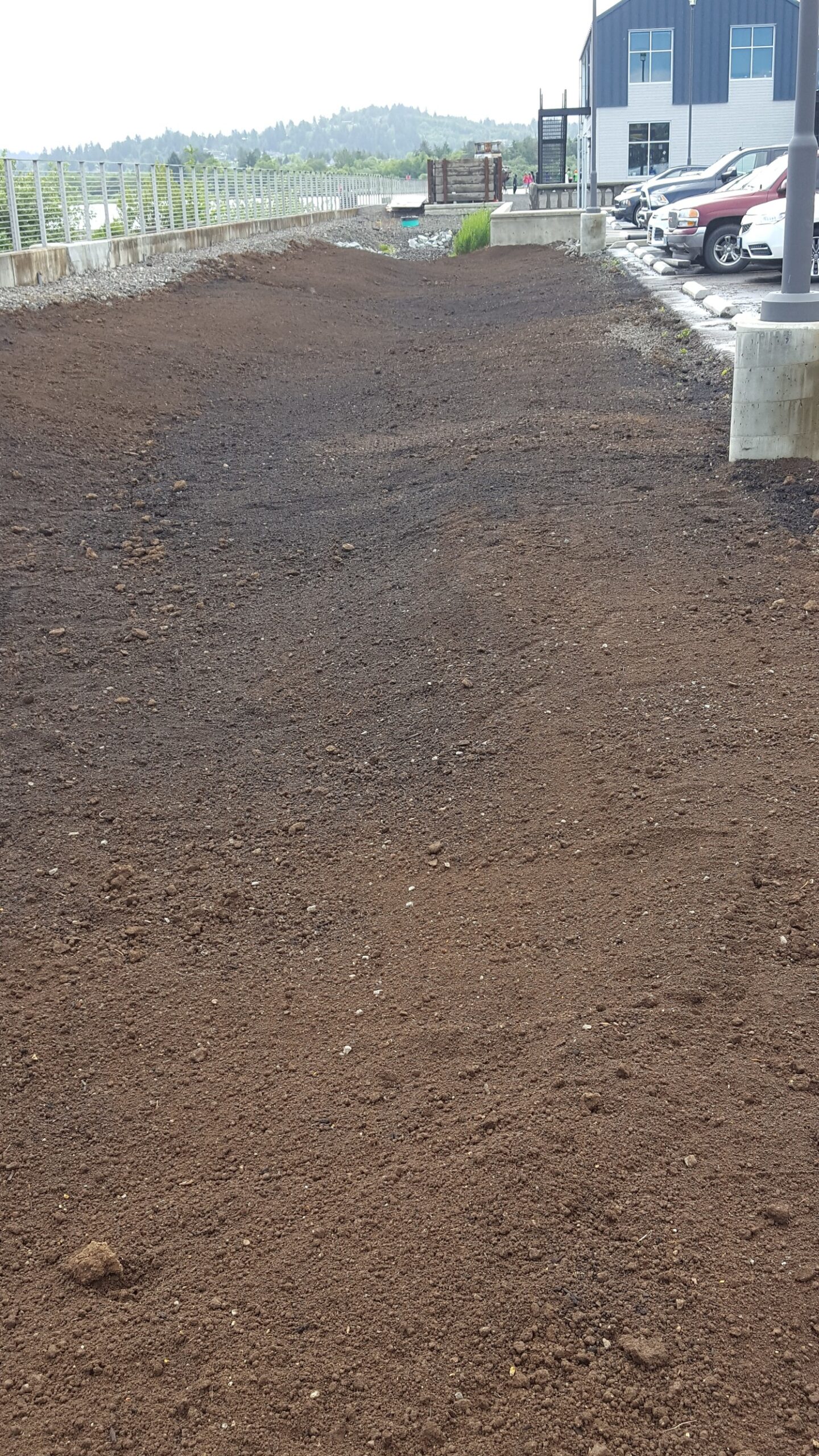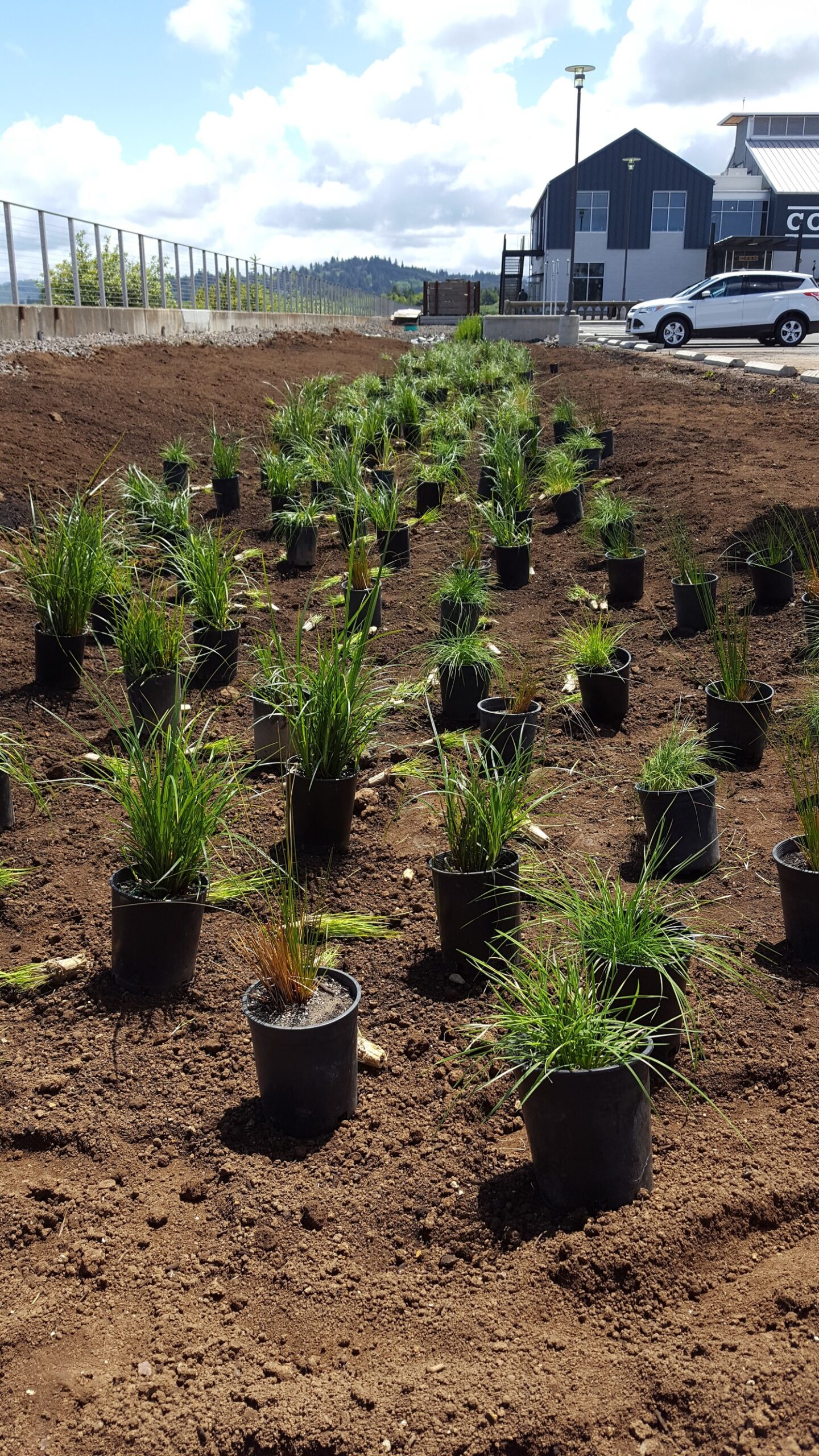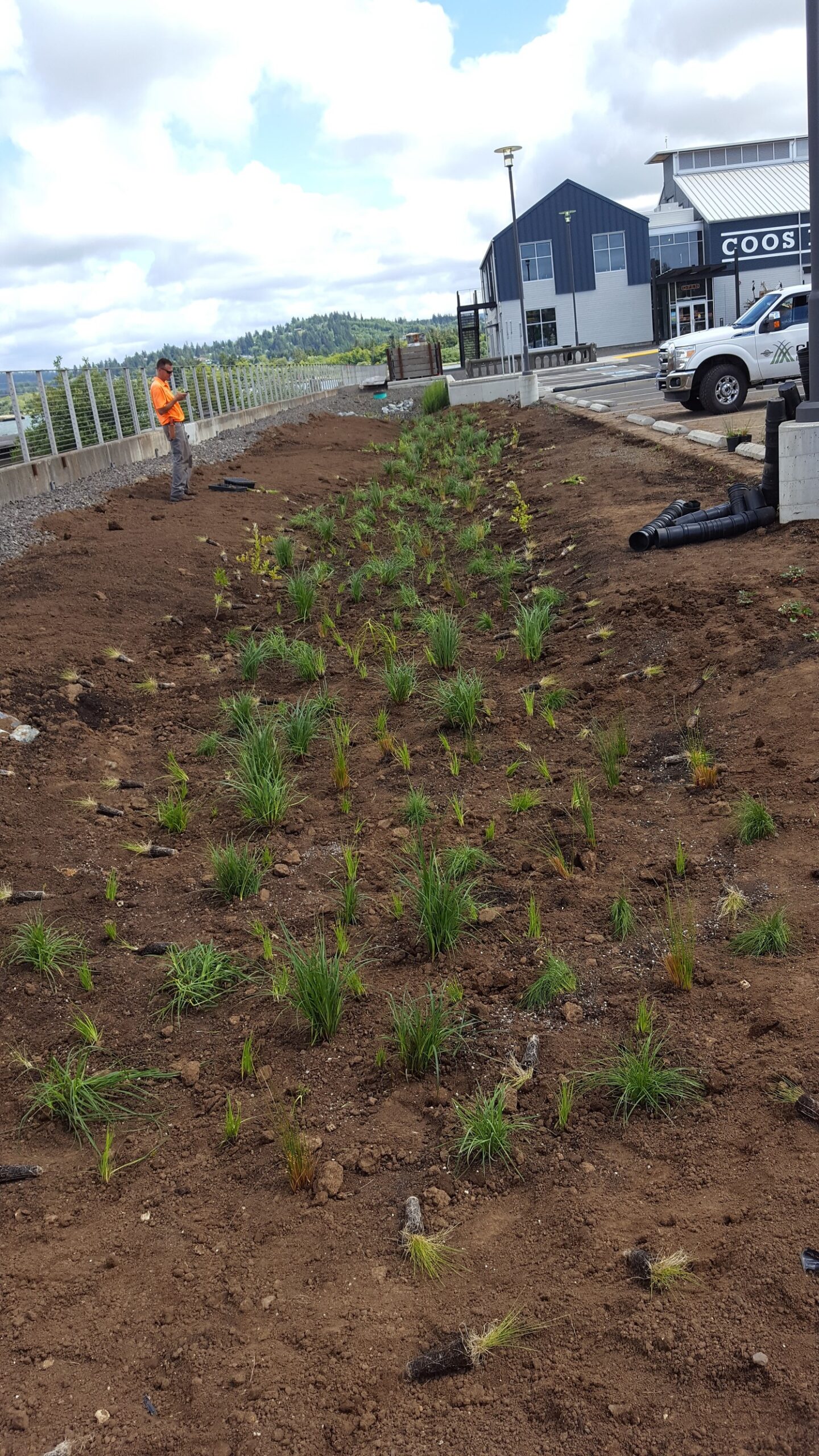Watershed Restoration
Before settlement, our stream and river systems were sinuous and marshy, providing highly productive rearing areas for juvenile salmon. Over the past 150 years, many of these areas have been severely altered to accommodate agriculture, logging, and other land development practices. As a watershed association, our goal is to promote land management approaches that are viable for both people and wildlife, using the “working landscape” model. We believe that human activities have a legitimate place in the watershed, and we promote win-win land use practices that are both productive for humans and healthy for fish and wildlife.
CoosWA collaborates with local landowners and community partners to bring back this balance in areas where it has been lost. We strive to create healthy stream habitat through three restoration programs: restoring the channels themselves (“in-stream” restoration), restoring the area along the stream (riparian restoration), and restoring our urban areas that drain into the bay.
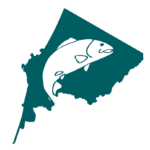
In-Stream Restoration
Targeted in-stream restoration has been a pillar of our work since CoosWA was founded.
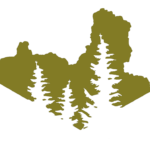
Riparian Restoration
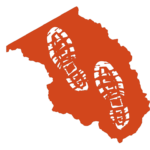
Urban Restoration
In-Stream Restoration
Wood Placements
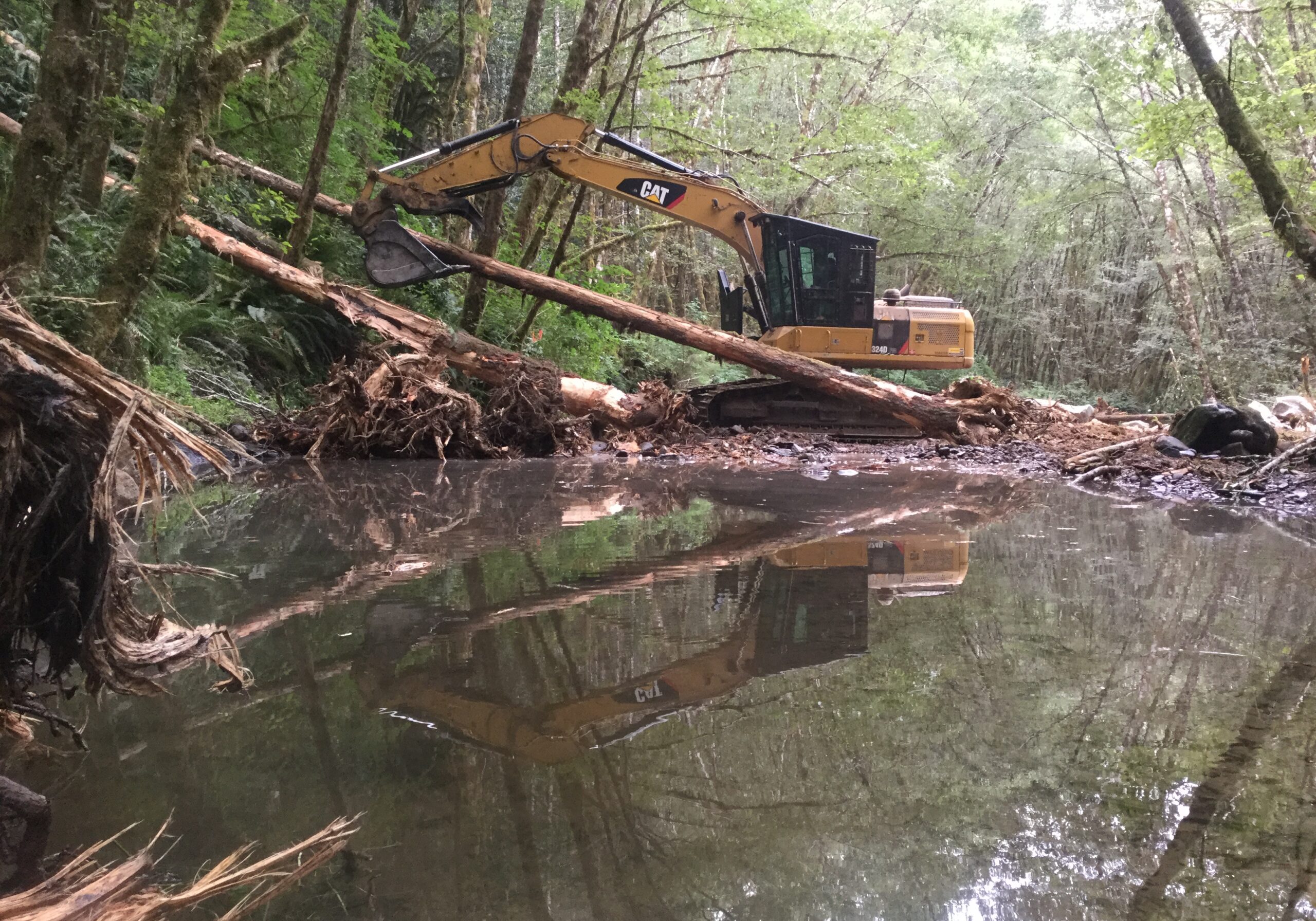
When trees fall into the water naturally, they create a plethora of benefits for streams and wildlife. We can mimic this natural process by placing boulders and large pieces of wood into the water. These “log jams” allow gravel and woody debris to build up, provide habitat for fish to hide from predators, and introduce complexity to the river channel. In turn, this increases the availability of spawning and rearing habitat for salmonids and other aquatic species, such as the aquatic insects that are important food sources for fish and birds.
Channel Reconfiguration
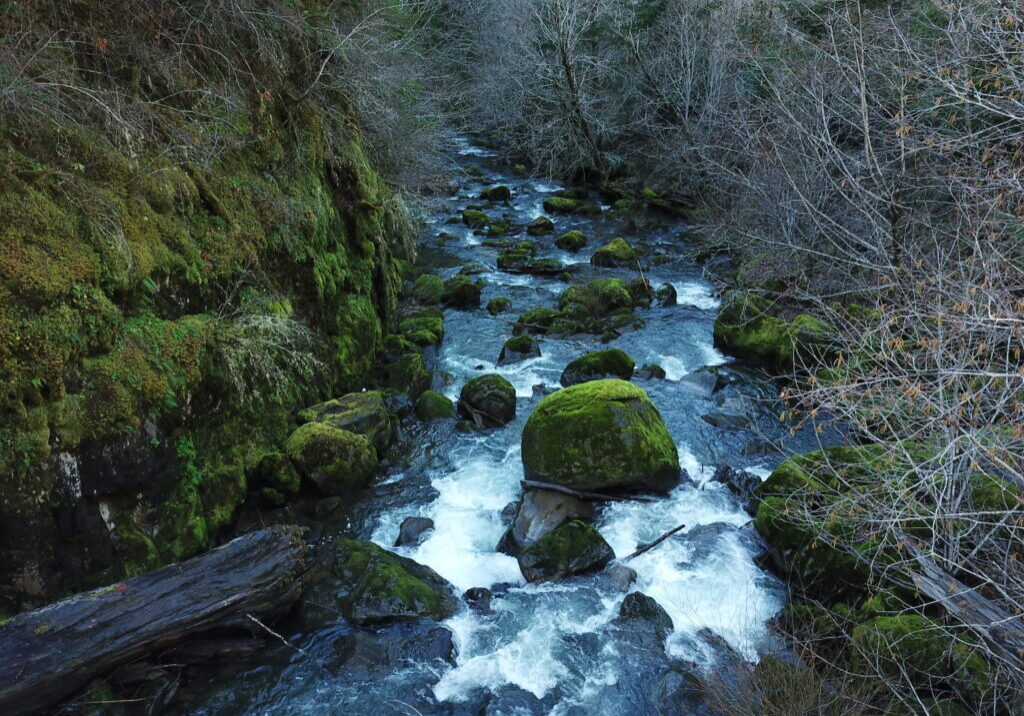
Fish Passage
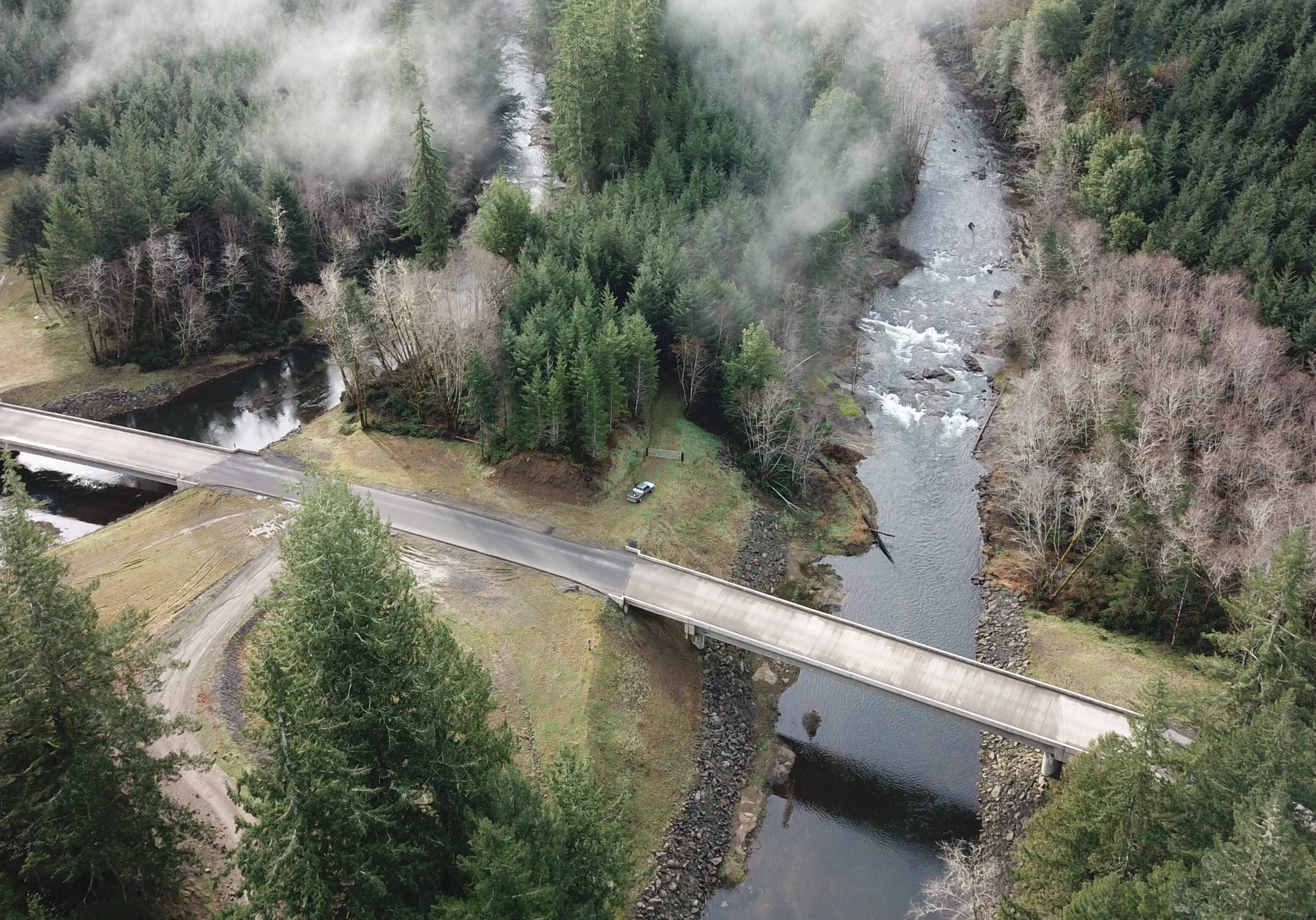
Salmon depend on many different habitats during their journey between rivers and ocean, such as upstream, gravel-lined streams for spawning; lowland, slow-moving tidal areas for rearing; and deep shaded pools and side channels along the way to hide from predators. Barriers such as undersized culverts or tide gates can cut off passage to these critical habitats. We often have the chance to remove these barriers and restore natural stream flow by working with landowners to upgrade, resize, or remove failing culverts and tide gates. In addition to improving fish passage, barrier removal also restores hydraulic function and gravel and debris transportation, which improves the overall health and function of the stream.
Sediment Reduction
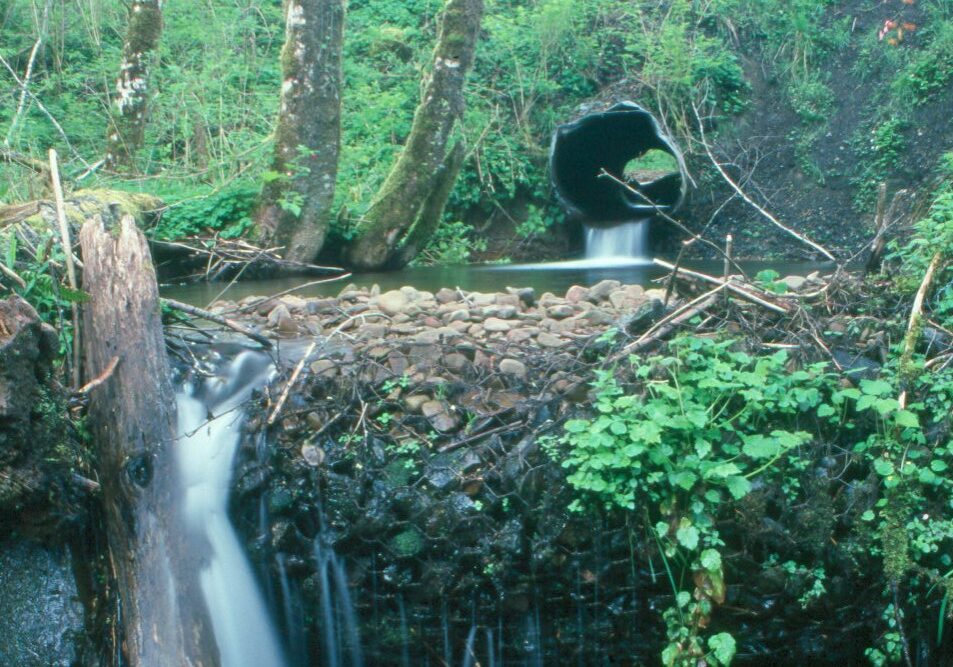
When sediment enters streams in large concentrations, it blankets gravel beds, fills in pools, and has catastrophic impacts on aquatic life. This is especially problematic when a source adds sediment continuously over time, such as a road with poor drainage or limited filtration between the road and stream. CoosWA works to reduce these impacts by building larger vegetated buffers around streams, expanding the number of drainage features (culverts, etc.), and increasing the size of stream crossing culverts to reduce the possibility of plugging and complete failures.
Riparian Restoration
Healthy riparian zones, or areas of vegetation along stream banks, play a key role in creating habitat for aquatic species. A diverse mix of native trees and shrubs along a creek provides shade, lowers stream temperatures, reduces erosion by holding the streambank in place, and acts as a buffer that filters run-off from the surrounding land. Riparian plantings also improve the aquatic food web – leaves that fall into the stream are a food source for aquatic insects, which are in turn a food source for fish and birds.
CoosWA restores functionality to riparian zones through planting and streambank protection. These techniques are frequently combined with other types of restoration, such as in-stream projects, to holistically restore streams.
Planting
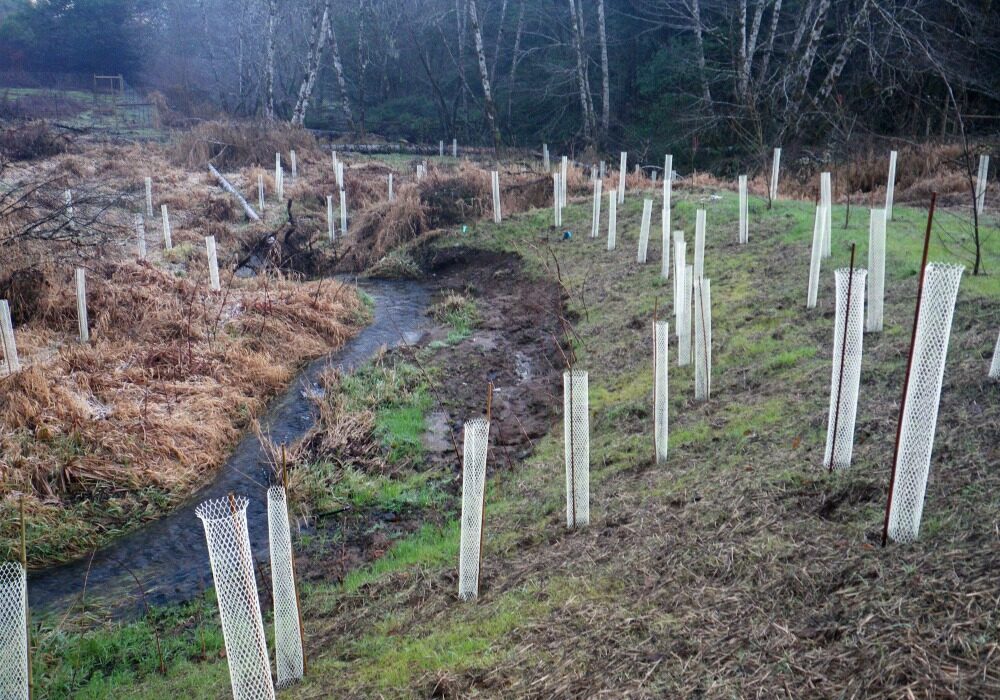
Streambank Protection
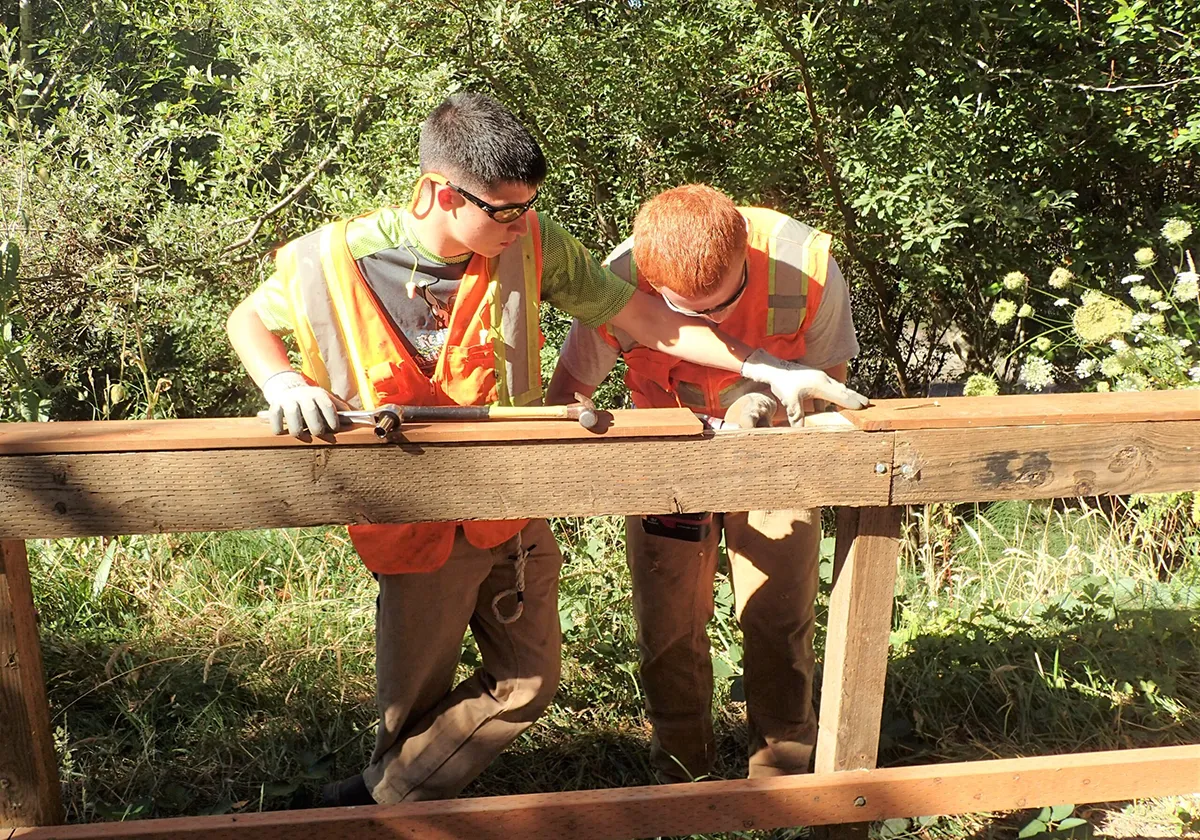
Urban Restoration
Stormwater education program
To draw attention to stormwater pollution and inspire our community become part of the solution, CoosWA teamed up with a suite of local artists, business owners, and environmental professionals to create storm drain murals and stencils in Coos Bay and North Bend. This art helps make the connection between what goes into the drains (which is often invisible) and the fish and wildlife that are impacted when stormwater enters the bay. The take-away message is that we can all do our part to reduce stormwater pollution by doing simple things like checking our vehicles for leaks, cutting down on fertilizer and pesticide use, landscaping with native plants, and keeping litter and plastics out of storm drains. Click here for a map to the Downtown Coos Bay Mural Walk, and click here for our new “BAY AWARE” handout!
Ecological landscaping program
Ecological landscaping involves the use of native plants, which can filter and reduce stormwater runoff, prevent erosion, provide wildlife habitat, and restore ecological function to our urban areas. It also involves removing non-native and invasive species, those that did not evolve here on the coast. For example, ivy and Scotch broom are frequent, persistent, long-term residents of urban areas, and we focus many of our ecological landscaping efforts on their removal from parks and other natural areas. Visit our plants page for more info about native plants, invasive species, and ideas for landscaping near your home or business.
Ecological landscaping in action
One of CoosWA’s ecological landscaping techniques is creating rain gardens and bioswales [ https://oeconline.org/reduce-your-runoff-with-a-rain-garden/ ], which are basins full of native plants that are strategically placed to capture runoff from surrounding areas, such as in a parking lot or alongside a busy street. The basin filters rainwater through the plant roots, helping the water go down (into the ground) rather than out (across the pavement, into a storm drain, and into the bay).
There are some great examples of rain gardens around the Coos watershed, such as the Coos History Museum, 7 Devils Brewing Company, South Slough Interpretive Center, and Oregon Institute of Marine Biology.
